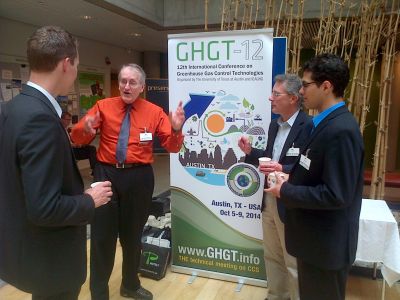 The 7th bi-annual Trondheim CCS Conference was held over 4th – 6th June in Trondheim, Norway. There were 350 delegates from 24 countries, with 153 oral presentations spread over 6 parallel sessions as well as 13 key note and plenary speakers, and more than 100 posters.
The 7th bi-annual Trondheim CCS Conference was held over 4th – 6th June in Trondheim, Norway. There were 350 delegates from 24 countries, with 153 oral presentations spread over 6 parallel sessions as well as 13 key note and plenary speakers, and more than 100 posters.
The conference was opened by Nils Røkke, the conference chair and vice-president of SINTEF, who emphasised the need to act now following the news of the atmosphere reaching 400ppm of CO2. He also emphasised that CCS needs to be part of the solution, so therefore needs a 'level playing field' compared to other low carbon solutions. He also stressed the importance of industrial CCS, as the only way to reduce CO2 emissions from industry (e.g. steel and cement) and bio-CCS as a potential carbon negative solution. There was also an update from Juho Lipponen, the head of the IEA CCS unit on the new IEA CCS roadmap, which will be due out in July. The new roadmap focuses on what governments need to do to get CCS in place. Ensuring the conference wasn't just on European work, Mike Monea of Saskatchewan Power gave a plenary talk on the Boundary Dam project, the world's first full-scale capture and storage from a coal power plant, now in advanced stages of construction.
 IEAGHG studies presented at the conference were 'Methodologies and Technologies for Mitigation of undesired CO2 Migration in the Subsurface', which was given by Thomas Le Guenan of BRGM and 'Interaction of CO2 Storage with subsurface resources' and 'Induced Seismicity and its Implication for CO2 Storage Risk' which were both presented by Millie Basava-Reddi of IEAGHG. Tim Dixon, IEAGHG's Technical Programme Manager presented his work on Improving the Protocols for Leakage Monitoring with CO2 Attribution Monitoring, which builds on activities of the IEAGHG Research Networks, two of which were meeting the following week in Trondheim – Risk Management Network and the Modelling Network. In addition, Neil Wildgust, formerly of IEAGHG, talked on the main conclusions and best practices learned from the vast body of research within the IEAGHG Weyburn-Midale CO2 Monitoring and Storage Project.
IEAGHG studies presented at the conference were 'Methodologies and Technologies for Mitigation of undesired CO2 Migration in the Subsurface', which was given by Thomas Le Guenan of BRGM and 'Interaction of CO2 Storage with subsurface resources' and 'Induced Seismicity and its Implication for CO2 Storage Risk' which were both presented by Millie Basava-Reddi of IEAGHG. Tim Dixon, IEAGHG's Technical Programme Manager presented his work on Improving the Protocols for Leakage Monitoring with CO2 Attribution Monitoring, which builds on activities of the IEAGHG Research Networks, two of which were meeting the following week in Trondheim – Risk Management Network and the Modelling Network. In addition, Neil Wildgust, formerly of IEAGHG, talked on the main conclusions and best practices learned from the vast body of research within the IEAGHG Weyburn-Midale CO2 Monitoring and Storage Project.
In each conference an award is given to a hjosirly prized member of the CCS community and this year the award was given to Tore Torp, recently retired from Statoil. Dr. Tore Torp has championed the cause of CCS since the start of the world-pioneering Sleipner CO2 project in 1996, and is recognized around the world for his contributions. In his speech, Tore talked about 2 ways forward for CCS – building trust through storage pilot projects and smaller steps, including the use R&D pilots using industrial sources of CO2.
The conference is timed to alternative years with the GHGT series, and provided a good and very useful review of new work carried out in the CCS research community, with a focus on Europe and how CCS can now go forwards there.
Millie Basava-Reddi and Tim Dixon


